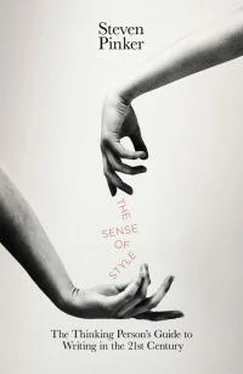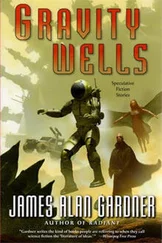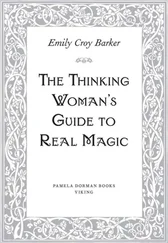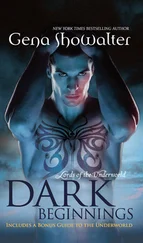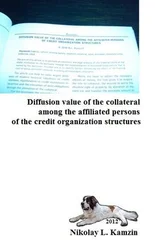There are many other ordering schemes: leading the reader on a trek across a geographical territory; narrating the travails of a hero who must overcome obstacles on his way to achieving a goal; mimicking a debate in which the two sides present their positions, rebut each other, sum up their cases, and await a verdict; and, sometimes, recounting the history of discovery that culminated in our current understanding.
Appreciating the treelike nature of a text can also help you understand one of the few devices available in nontechnical prose to visually mark the structure of discourse: the paragraph break. Many writing guides provide detailed instructions on how to build a paragraph. But the instructions are misguided, because there is no such thing as a paragraph. That is, there is no item in an outline, no branch of a tree, no unit of discourse that consistently corresponds to a block of text delimited by a blank line or an indentation. What does exist is the paragraph break: a visual bookmark that allows the reader to pause, take a breather, assimilate what he has read, and then find his place again on the page.
Paragraph breaks generally coincide with the divisions between branches in the discourse tree, that is, cohesive chunks of text. But the same little notch must be used for divisions between branches of every size, whether it’s the end of a minor digression, the end of a major summation, or anything in between. Sometimes a writer should cleave an intimidating block of print with a paragraph break just to give the reader’s eyes a place to alight and rest. Academic writers often neglect to do this and trowel out massive slabs of visually monotonous text. Newspaper journalists, mindful of their readers’ attention spans, sometimes go to the other extreme and dice their text into nanoparagraphs consisting of a sentence or two apiece. Inexperienced writers tend to be closer to academics than to journalists and use too few paragraph breaks rather than too many. It’s always good to show mercy to your readers and periodically let them rest their weary eyes. Just be sure not to derail them in the middle of a train of thought. Carve the notch above a sentence that does not elaborate or follow from the one that came before.
For all the cognitive benefits of hierarchical organization, not all texts have to be organized into a tree. A skilled writer can interleave multiple story lines, or deliberately manipulate suspense and surprise, or engage the reader with a chain of associations, each topic shunting the reader to the next. But no writer can leave the macroscopic organization of a text to chance.
Whether or not a text is organized to fit into a hierarchical outline, the tree metaphor goes only so far. No sentence is an island; nor is a paragraph, a section, or a chapter. All of them contain links to other chunks of text. A sentence may elaborate, qualify, or generalize the one that came before. A theme or topic may run through a long stretch of writing. People, places, and ideas may make repeat appearances, and the reader must keep track of them as they come and go. These connections, which drape themselves from the limbs of one tree to the limbs of another, violate the neatly nested, branch-within-branch geometry of a tree. 2I’ll call them arcs of coherence.
Like the mass of cables drooping behind a desk, the conceptual connections from one sentence to another have a tendency to get gnarled up in a big, snaggly tangle. That’s because the links connected to any idea in our web of knowledge run upwards, downwards, and sideways to other ideas, often spanning long distances. Inside the writer’s brain, the links between ideas are kept straight by the neural code that makes memory and reasoning possible. But out there on the page, the connections have to be signaled by the lexical and syntactic resources of the English language. The challenge to the writer is to use those resources so that the reader can graft the information in a series of sentences into his web of knowledge without getting tangled up in either.
Coherence begins with the writer and reader being clear about the topic . The topic corresponds to the small territory within the vast web of knowledge into which the incoming sentences should be merged. It may seem obvious that a writer should begin by laying her topic on the table for the reader to see, but not all writers do. A writer might think that it’s unsubtle to announce the topic in so many words, as in “This paper is about hamsters.” Or she herself may discover her topic only after she has finished laying her ideas on paper, and forget to go back and revise the opening to let the reader in on her discovery.
A classic experiment by the psychologists John Bransford and Marcia Johnson shows why it’s essential to let the reader in on the topic early. 3They asked participants to read and remember the following passage:
The procedure is actually quite simple. First you arrange things into different groups depending on their makeup. Of course, one pile may be sufficient depending on how much there is to do. If you have to go somewhere else due to lack of facilities that is the next step, otherwise you are pretty well set. It is important not to overdo any particular endeavor. That is, it is better to do too few things at once than too many. In the short run this may not seem important, but complications from doing too many can easily arise. A mistake can be expensive as well. The manipulation of the appropriate mechanisms should be self-explanatory, and we need not dwell on it here. At first the whole procedure will seem complicated. Soon, however, it will become just another facet of life. It is difficult to foresee any end to the necessity for this task in the immediate future, but then one never can tell.
Needless to say, the passage made little sense to them, as I expect it made little sense to you, and they could remember few of the sentences. Another group of people got the same passage but with a new tidbit slipped into the instructions: “The paragraph you will hear will be about washing clothes.” The level of recall doubled. A third group was given the topic after reading the story; it didn’t help them at all. The moral for a writer is obvious: a reader must know the topic of a text in order to understand it. As newspaper editors say: Don’t bury the lede ( lede being journalist jargon for “lead,” which might otherwise be misread as the heavy metal).
Now, you might object that the experimenters stacked the deck by writing a passage about a concrete physical activity in vague and abstract language. But they also ran a study in which almost every sentence referred to a concrete object or action:
A newspaper is better than a magazine.
A seashore is a better place than the street.
At first it is better to run than to walk.
You may have to try several times.
It takes some skill but it’s easy to learn.
Even young children can enjoy it.
Once successful, complications are minimal.
Birds seldom get too close.
Rain, however, soaks in very fast.
Too many people doing the same thing can also cause problems.
One needs lots of room.
If there are no complications, it can be very peaceful.
A rock will serve as an anchor.
If things break loose from it, however, you will not get a second chance.
Make sense? How about with this clue: “The sentences are about making and flying a kite.” Stating the topic is necessary because even the most explicit language can touch on only a few high points of a story. The reader has to fill in the background—to read between the lines, to connect the dots—and if he doesn’t know which background is applicable, he will be mystified.
Together with the topic of a text, the reader usually needs to know its point . He needs to know what the author is trying to accomplish as she explores the topic. Human behavior in general is understandable only once you know the actor’s goals. When you see someone waving her arms, the first thing you want to know is whether she is trying to attract attention, shoo away flies, or exercise her deltoids. That is also true of writing. The reader needs to know whether a writer is rabbiting on about a topic in order to explain it, convey interesting new facts about it, advance an argument about it, or use it as an example of an important generalization. In other words, a writer has to have both something to talk about (the topic) and something to say (the point).
Читать дальше
